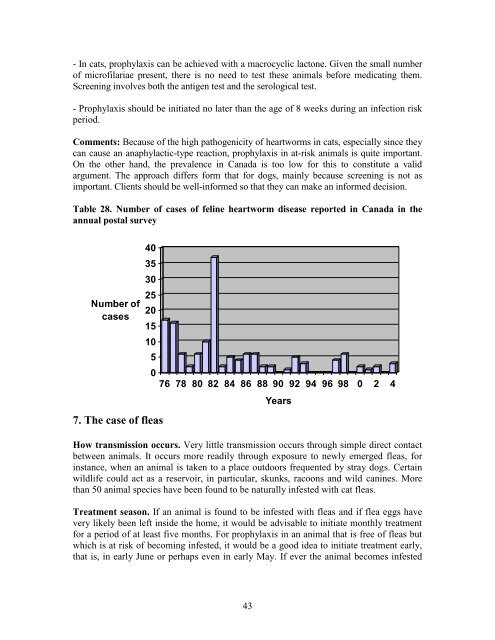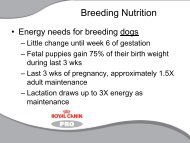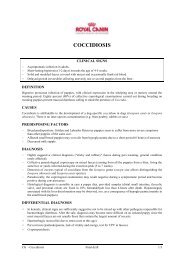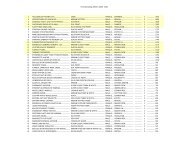Guide to Preventing Parasites.pdf - Royal Canin Canada
Guide to Preventing Parasites.pdf - Royal Canin Canada
Guide to Preventing Parasites.pdf - Royal Canin Canada
You also want an ePaper? Increase the reach of your titles
YUMPU automatically turns print PDFs into web optimized ePapers that Google loves.
- In cats, prophylaxis can be achieved with a macrocyclic lac<strong>to</strong>ne. Given the small number<br />
of microfilariae present, there is no need <strong>to</strong> test these animals before medicating them.<br />
Screening involves both the antigen test and the serological test.<br />
- Prophylaxis should be initiated no later than the age of 8 weeks during an infection risk<br />
period.<br />
Comments: Because of the high pathogenicity of heartworms in cats, especially since they<br />
can cause an anaphylactic-type reaction, prophylaxis in at-risk animals is quite important.<br />
On the other hand, the prevalence in <strong>Canada</strong> is <strong>to</strong>o low for this <strong>to</strong> constitute a valid<br />
argument. The approach differs form that for dogs, mainly because screening is not as<br />
important. Clients should be well-informed so that they can make an informed decision.<br />
Table 28. Number of cases of feline heartworm disease reported in <strong>Canada</strong> in the<br />
annual postal survey<br />
Number of<br />
cases<br />
40<br />
35<br />
30<br />
25<br />
20<br />
15<br />
10<br />
5<br />
7. The case of fleas<br />
0<br />
76 78 80 82 84 86 88 90 92 94 96 98 0 2 4<br />
How transmission occurs. Very little transmission occurs through simple direct contact<br />
between animals. It occurs more readily through exposure <strong>to</strong> newly emerged fleas, for<br />
instance, when an animal is taken <strong>to</strong> a place outdoors frequented by stray dogs. Certain<br />
wildlife could act as a reservoir, in particular, skunks, racoons and wild canines. More<br />
than 50 animal species have been found <strong>to</strong> be naturally infested with cat fleas.<br />
Treatment season. If an animal is found <strong>to</strong> be infested with fleas and if flea eggs have<br />
very likely been left inside the home, it would be advisable <strong>to</strong> initiate monthly treatment<br />
for a period of at least five months. For prophylaxis in an animal that is free of fleas but<br />
which is at risk of becoming infested, it would be a good idea <strong>to</strong> initiate treatment early,<br />
that is, in early June or perhaps even in early May. If ever the animal becomes infested<br />
43<br />
Years







